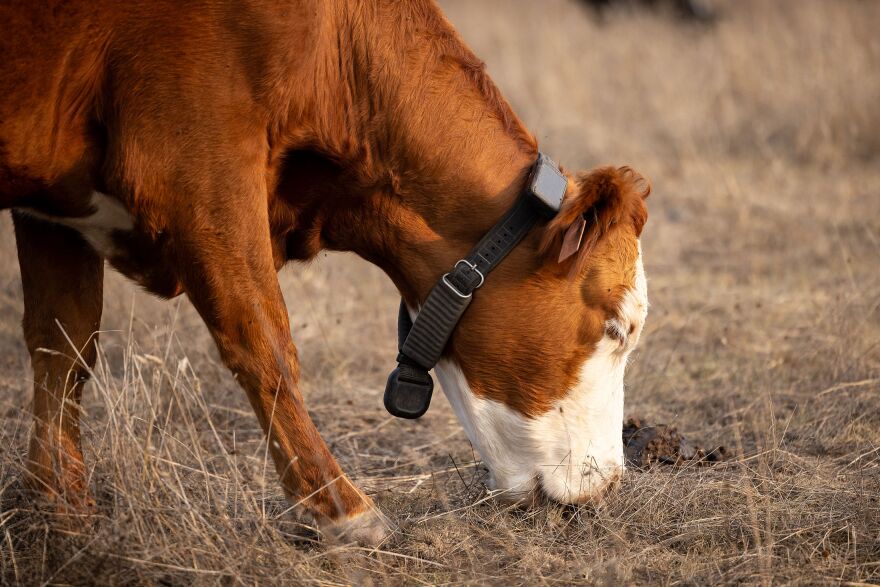Sheridan County ranchers and the Sheridan Community Land Trust are partnering to try out a technology called virtual fencing. The land trust is also hosting a hands-on field day on Monday, Nov. 3, to give people a chance to test-drive the tech in real time.
Virtual fencing for livestock is a bit like invisible fences for dogs. Producers set up pastures by drawing boundaries on an app on their phone and livestock wear collars, which are connected to the app via satellite or cell towers. The collars then beep or buzz when the critters get too close to those digitally-drawn barriers.
John Graves is the director of conservation at the Sheridan Community Land Trust. He said virtual fencing is a tool that gives producers “infinite possibilities” of how they can manage their land: they can direct herds toward priority areas, to do things like munch on invasive cheat grass, or limit their access to overgrazed plots or more environmentally sensitive spots like wetlands.
“ Instead of [animals] grazing the entire creek and eroding away the creek bank in multiple locations, if you develop a specific point that's designed to handle continuous livestock going down to get their water, you can put a break in your virtual fence to allow livestock to go down there,” said Graves.
The technology can also be set up to locate livestock and move herds to different pastures automatically. It’s been gaining traction in Wyoming and was the main topic of discussion at a symposium in Cody this January.
But it’s still relatively new to the U.S. and it’s not cheap. According to Graves, a company called Halter currently offers collars to rent at $66 per head per year, for a herd of over a hundred, while a company called Vence sells collars for $350 each. Then there’s the cost of the transmission towers themselves, which can range from $4,500 to $10,000, and the number needed can vary based on the topography and remoteness of the ranch.

The Sheridan Community Land Trust is currently partnering with three producers in the area, who are giving virtual fencing a try for the next couple of years. Thanks to a grant from the Nature Conservancy, the land trust is covering the cost of the transmission towers, while the producers are paying for the collars and internet connection.
The ranchers live in different parts of the county and have collared over a hundred head of cattle on their properties. Over the course of the three-year pilot project, they’ll experiment first-hand with the pros and cons of virtual fencing.
“ We want them to document what's working, what's not working, what didn't work but then you found a way to make it work, just their experience,” said Graves. “ We're also gonna be doing some monitoring and some photo points with our partners so we can see how the land is changing.”
To Graves, the goal at the end of the day isn’t to get rid of all physical fences. Instead, it’s for ranchers to have another tool in their land management toolbelt, and for animals like deer and pronghorn to have an easier time moving through the landscape.
“ This virtual fencing is the ultimate wildlife friendly fence because it is no fence. There's no fence there, there's no barriers,” he said. “Change is hard, but technology can help us with that change.”
The upcoming virtual fencing field day will take place at the Sheridan Community Land Trust at the Big Goose Natural Area on Nov. 3. The land trust has a grazing lessee whose cattle are currently on the property, so attendees will get a hands-on demonstration of what virtual fencing actually looks like in practice.
The New Zealand-founded company Halter, which makes solar-powered collars, will also be there to talk about the technology and answer questions.








